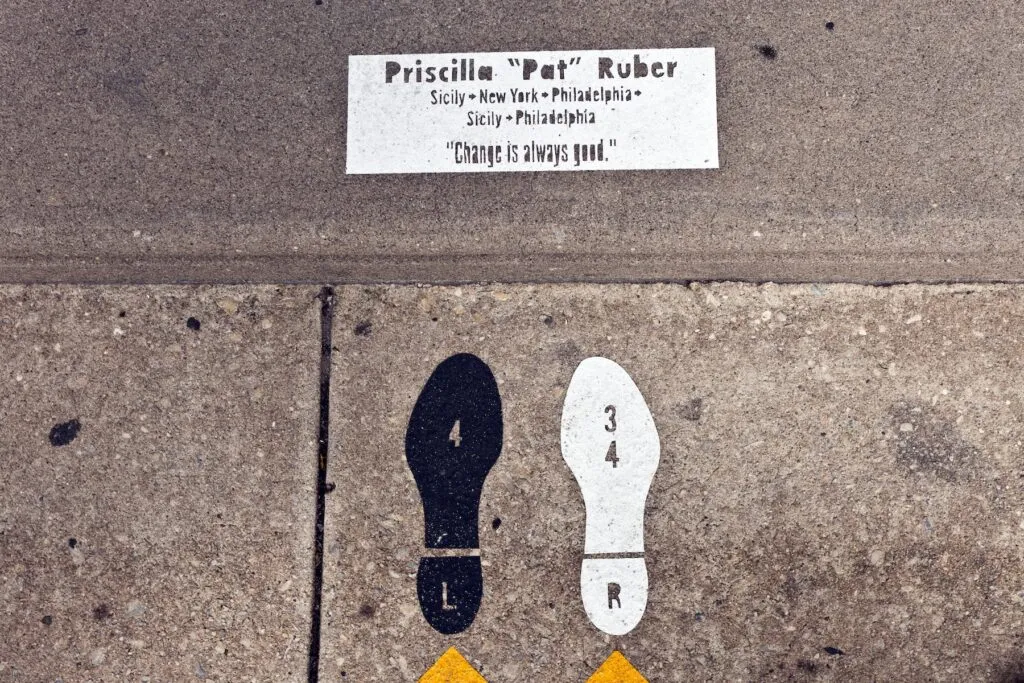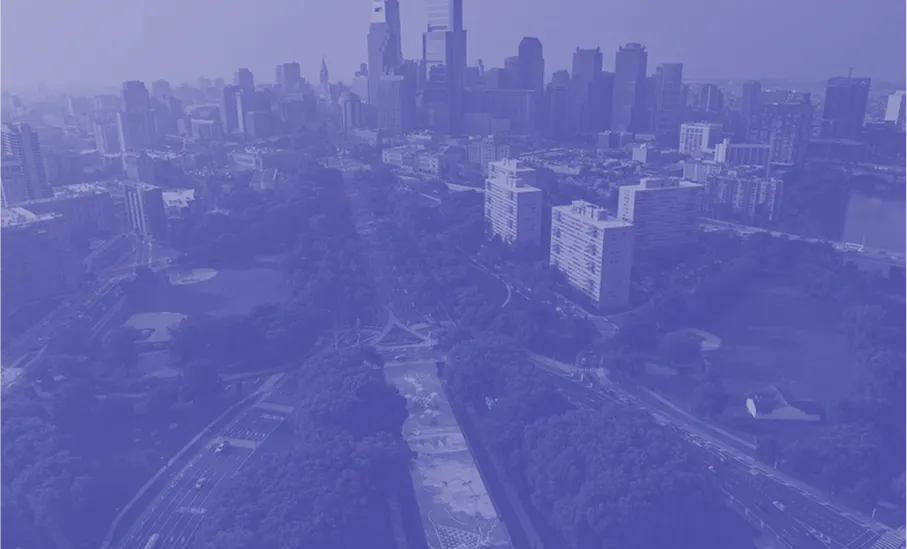Start Here

Beginning at the corner of Morris Street and East Passyunk, “Arthur Murray-style” instructional footprint patterns constructed of multicolored pavement tape led pedestrians south. Each set of footprints mapped out an original choreography that was created by drawing on first-person “journey stories”: how a person or a person’s family came to the United States and eventually became rooted in South Philadelphia. The footprints ended at a vacant but perfectly preserved barbershop, where video and audio installations further explored the stories of the sidewalk choreographies.
The dance patterns on the sidewalk invited people to participate by experiencing a memory and a story with their own bodies. This created a unique and ever evolving dance—first, for the participants, moving through the patterns, and second, for the bystanders, seeing pedestrians engaged in movement in the middle of the sidewalk. At the heart of this exploration was the question: “Where do the paths of immigration intersect?” On the Avenue, the embodied stories of people of diverse cultures merged at a single intersection. They were revealed in new ways as physical interactions overlapped with the multiple layers of their journeys.
About Journeys South
Community-based public artists often ask themselves how they can best represent the history and spirit of the communities with whom they work. How can they create with integrity and yet understand that they may not be the true owners of the finished art? The rightful owners of these works of art are not anonymous: they are the children who walk by the site on the way to school, they are the members of local churches, they run the corner stores, and they are elders who have lived in the same house for forty years. They are the activists, block captains, and ordinary citizens who feel connected to and synonymous with the fabric of the community. They provide the spark that makes our work possible and the content that gives it shape.
Journeys South is not about the history of political figures, medaled heroes, artists or entertainers—many of which have been depicted on murals south of South Street. Rather, it is a series of projects that excavate and elevate the experience and memories of living South Philadelphians to tell the history of a community that has welcomed many, resisted the settlement of some, but which has evolved ways to accommodate newcomers who would leave their distinctive marks on the streets, homes, shops and public institutions of Philadelphia’s original working class community, and shape its particular and changing character.
Journeys South does not add to the inventory of large scale paintings on walls. Its title is less a destination than a direction. It seeks a different experience of public art—one which requires greater engagement on the part of the viewer who is asked to “journey” through time and space to connect ideas and images. In the course of planning discussions, project advisor Helen Shannon of the Museum Studies Department at the University of the Arts talked about the importance of the interstitial: of the things in between the projects that help us make connections. While she intended to point out the need to connect the individual works of art, it became clear that these works of art are themselves connectors to each other and the larger body of murals and other expressions of South Philadelphia’s cultural heritage.
With such a richly layered immigrant history, and the attendant changing areas of contested territories and values, the inquiry into developing Journeys South would have to honor the live geology of these communities and delve deeply into the lives and institutions that supported their settlement and contributions to life in South Philadelphia. Using the networks that had been created over years in previous projects, and support that came from a planning grant from The Pew Center for Arts & Heritage through the Heritage Philadelphia Program, Mural Arts staff convened a group of advisors—artists, business people, community organizers and residents. Over the course of several months, this group would explore the territory and help develop an approach both to history in South Philadelphia and to what it meant to make sense the community’s long and often invisible changes.
The seven artists creating each part of Journeys South, five of whom were born and raised and/or currently reside in South Philadelphia, worked with community members, historians, and folklorists to gain a deeper understanding of the culture and history of South Philadelphia’s legendary neighborhoods.
Journeys South comprised four projects: 7th Street Memory Box, Neighbor Ballads, Start Here and Different Paths, One Market. These four temporary works of public art were on exhibition from April – June 2011 at various locations along South 9th Street and East Passyunk Avenue, bordered by Christian Street to the north and West Moore Street to the south.
Location Note: This temporary project is no longer on view at this location.

